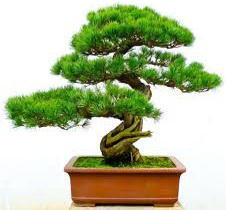Sound energy
Sound energy is a form of energy, which is produced when matter vibrates. More technically speaking, sound is produced when the kinetic energy that causes the vibration of an object or substance is transferred through matter in a wave-like formation. Typically, the energy in sound is far less than that in other forms of energy.
When a sound wave travels through air or water, the wave passes through the air or water molecules, pushing some molecules close together while parting the others, thereby causing them to vibrate. Eventually, as the wave travels, even the air inside your ears starts vibrating—that’s when you begin to perceive sound. Thus there are two different aspects to sound—the physical process that uses kinetic energy to produce sound energy and the secondary or physiological process that happens inside our ears and brains, which converts the sound energy into noise or voices. The first person to discover that sound needs a medium to travel through was English scientist Robert Boyle. He set an alarm clock ringing inside a large glass jar and while the clock was still ringing, he slowly sucked out all the air with a pump. As the air gradually disappeared, the sound died, proving that sound needs a medium to travel through.
HOW IS SOUND INTERPRETED? How a person interprets the sound depends on how close the person is to the source of sound. The further away the person is, the less the sound vibrations and thus the intensity of sound is much lower. Physiologically, the entire process of hearing a sound takes place in the ear. There are approximately 15,000 hair cells in the human inner ear, which are divided into two types—inner hair cells and outer hair cells. The inner hair cells are responsible for detecting sound and sending information about it to the brain, whilst the outer hair cells act as ‘amplifiers’, meaning that the ear can pick up even the quietest of sounds and can pick one sound out from others. Inner hair cells are lined up in a long row along the inner ear (which is essentially a tube filled with fluid) and each hair cell detects sounds of a different frequency. Hair cells nearest to the middle ear detect highpitched sounds, and then, as they get further and further away from the middle ear, they gradually detect lower and lower pitched sounds.
Humans can hear frequencies between 20 hertz and 20,000 hertz, which decreases as they age. Dogs can hear vibrations higher than 20,000 hertz but not below 40 hertz, which is why humans cannot hear dog whistles. Sometimes, loud noise can cause pain to people. This is called the pain threshold. This threshold is different from person to person. For example, teens can handle higher sound pressure than elderly people. People who work in factories tend to have a higher threshold because they get used to loud noise.
HOW SOUND IS USED: Sound is used for numerous things apart from communicating information.
● An experiment has proved that plants grow faster if you play classical music or talk to them every day. However, in 1962, Indian researcher Dr T C Singh deduced that rock music does not increase the growth levels of a plant, which showed that plants also had their own likes and dislikes.
● Researcher Robert Monroe discovered the effect of sound on human consciousness. Different kinds of music, beats and waves can affect the human mood.
● Doctors use ultrasound to create digital images of the body’s organs.
● Researchers at Princess Grace Hospital in London have been working on a system that could destroy cancer cells with sound.
● Peter Davey, a 92-year-old saxophone player in New Zealand, has invented a device that boils water using sonic waves.
● Bats and dolphins use high frequency sounds to see their surroundings. They create a mental picture of the area they are in by listening to how sound waves bounce off the environment. These days, many blind people are learning to do as dolphins and bats, by clicking their tongues and listening for the reverberations to understand their surroundings.
● Yoshiki Hashimoto, of Tokyo’s Kaijo Corporation, has developed a machine that lifts objects and moves them by acoustic levitation using supersonic waves. It is said that this could be used for weaponisation too.
QUICK FACTS
● Sound produces a relatively low level of energy when compared to other forms of energy.
● Because sound produces such a low level of energy, it is not used to create electricity.
● If the vibrational waves of a medium change, the sound it produces will also change.
● Sound is measured in decibels and pascals instead of the traditional unit of energy measurement, the joule.
● The intensity of sound energy is usually measured using the perception of a normal hearing person.
● The measurement of sound energy is related to its pressure and intensity.
● We are able to hear different sounds because as the sound (vibrations) enters our ear, the ear also vibrates.
● Dogs’ ears are more sensitive than human ears, which allow them to hear sounds that humans cannot hear.
● There is no sound in space because there is no medium for sound to travel through.
● Sound travels through a solid much faster than through air.
● Sound travels faster through a liquid such as water than it travels through air.
● The study of sound waves is called acoustics.
● Flies cannot hear at all.
● When whales communicate with each other underwater, their sound can travel up to 800kms into the ocean.
● The speed of sound in dry air at 20 degree Celsius is 1234kms/hr.





































